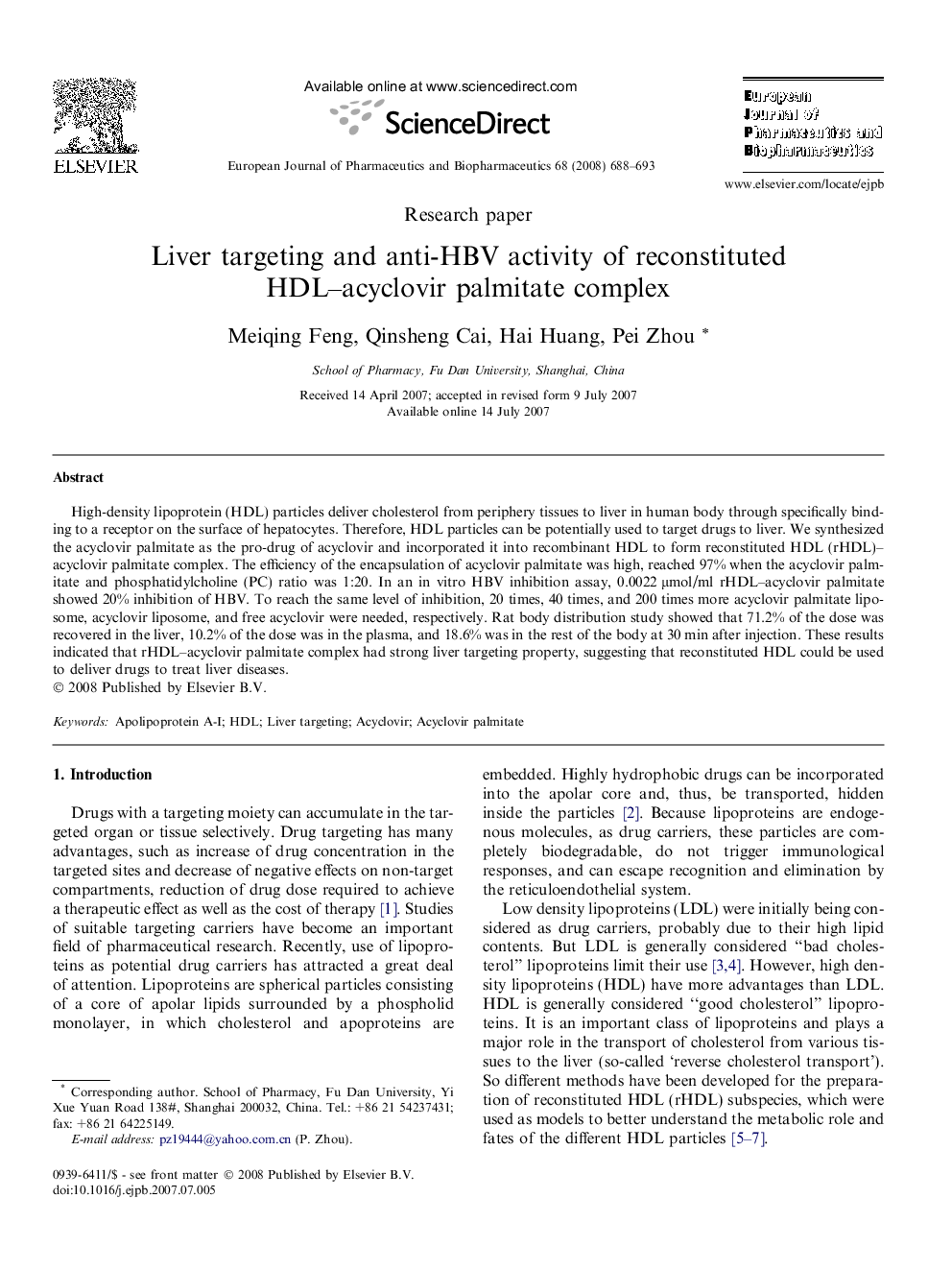| Article ID | Journal | Published Year | Pages | File Type |
|---|---|---|---|---|
| 2084880 | European Journal of Pharmaceutics and Biopharmaceutics | 2008 | 6 Pages |
High-density lipoprotein (HDL) particles deliver cholesterol from periphery tissues to liver in human body through specifically binding to a receptor on the surface of hepatocytes. Therefore, HDL particles can be potentially used to target drugs to liver. We synthesized the acyclovir palmitate as the pro-drug of acyclovir and incorporated it into recombinant HDL to form reconstituted HDL (rHDL)–acyclovir palmitate complex. The efficiency of the encapsulation of acyclovir palmitate was high, reached 97% when the acyclovir palmitate and phosphatidylcholine (PC) ratio was 1:20. In an in vitro HBV inhibition assay, 0.0022 μmol/ml rHDL–acyclovir palmitate showed 20% inhibition of HBV. To reach the same level of inhibition, 20 times, 40 times, and 200 times more acyclovir palmitate liposome, acyclovir liposome, and free acyclovir were needed, respectively. Rat body distribution study showed that 71.2% of the dose was recovered in the liver, 10.2% of the dose was in the plasma, and 18.6% was in the rest of the body at 30 min after injection. These results indicated that rHDL–acyclovir palmitate complex had strong liver targeting property, suggesting that reconstituted HDL could be used to deliver drugs to treat liver diseases.
